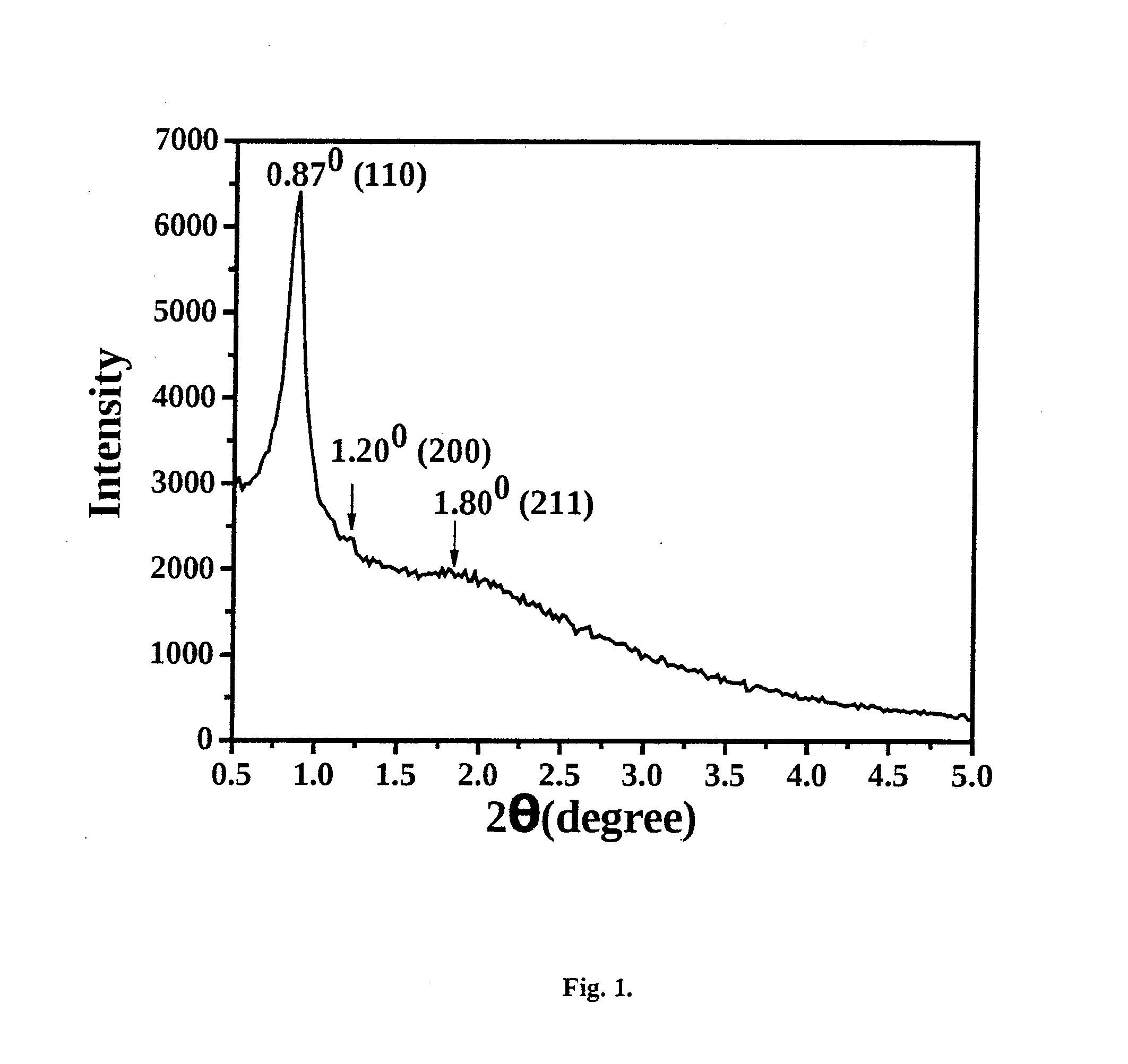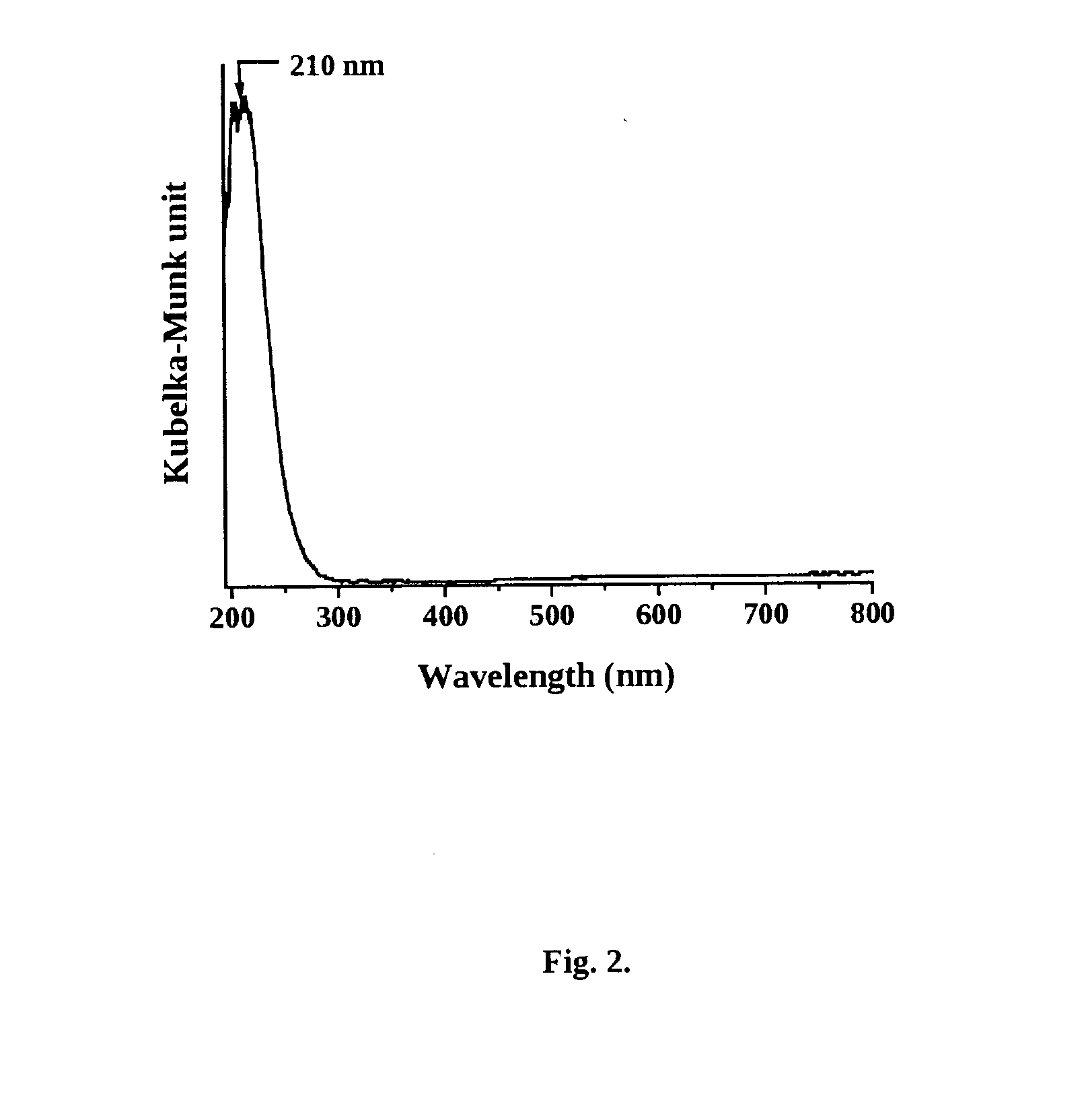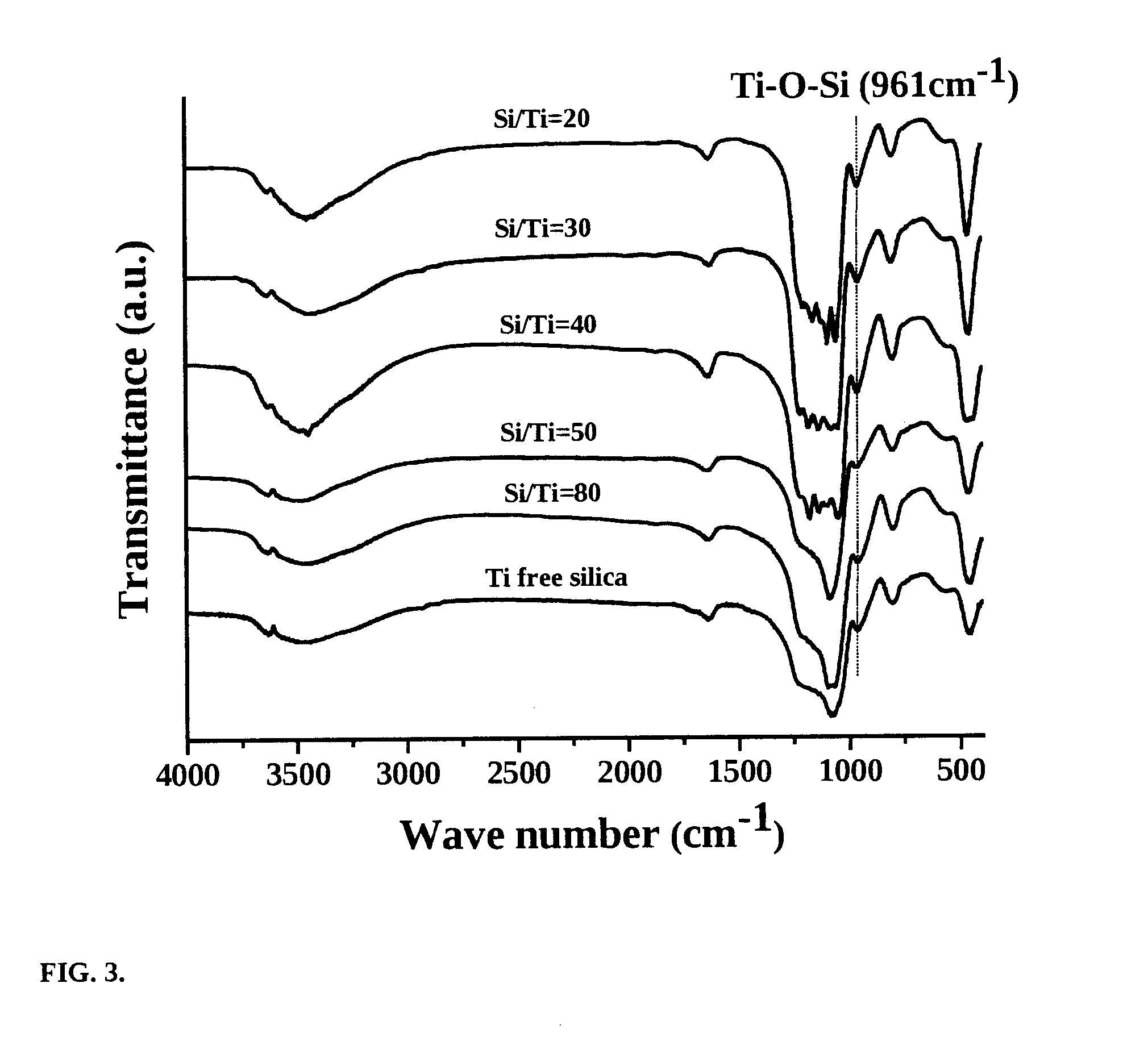Ordered mesoporous titanosilicate and the process for the preparation thereof
a technology of ordered mesoporous titanosilicate and mesoporous titanosilicate, which is applied in the preparation of oximes, physical/chemical process catalysts, organic chemistry, etc., can solve the problems of low thermal stability, difficult ti incorporation in those materials, and limited applicability of organic molecules with less than 0.5 nm diameter
- Summary
- Abstract
- Description
- Claims
- Application Information
AI Technical Summary
Benefits of technology
Problems solved by technology
Method used
Image
Examples
example 1
[0073]This example illustrates the preparation of mesoporous titanosilicate (Ti—SBA-16) of the present invention with Si / Ti molar ratio of 80. 7.391 g of F127 tri-block co-polymer (EO106-PO70-EO106;
[0074]average mol. wt. 12,600) was dissolved in 315.6 g of distilled water and 68.7 g of conc. HCl at 313 K with stirring for 2 h. To it, 28.34 g of tetraethyl orthosilicate (98%) was added over 30 min. 0.48 g of Ti-isopropoxide (98%) dissolved in 10 ml of isopropanol was, then, added. Stirring was continued for 20 h. The gel formed was transferred to a Teflon-lined stainless steel autoclave. It was crystallized at 353 K for 48 h. The solid formed was recovered, washed with water, dried at 373 K for 12 h and calcined in air at 823 K for 8 h.
example 2
[0075]This example illustrates the preparation of mesoporous titanosilicate (Ti—SBA-16) of the present invention with Si / Ti molar ratio of 50. 7.391 g of F127 tri-block co-polymer (EO106-PO70-EO106; average mol. wt. 12,600) was dissolved in 315.6 g of distilled water and 68.7 g of conc. HCl at 313 K with stirring for 2 h. To it, 28.34 g of tetraethyl orthosilicate (98%) was added over 30 min. 0.773 g of Ti-isopropoxide (98%) dissolved in 10 ml of isopropanol was, then, added. Stirring was continued for 20 h. The gel formed was transferred to a Teflon-lined stainless steel autoclave. It was crystallized at 353 K for 48 h. The solid formed was recovered, washed with water, dried at 373 K for 12 h and calcined in air at 823 K for 8 h.
example 3
[0076]This example illustrates the preparation of mesoporous titanosilicate (Ti—SBA-16) of the present invention with Si / Ti molar ratio of 40. 7.391 g of F127 tri-block co-polymer (EO106-PO70-EO106; average mol. wt. 12,600) was dissolved in 315.6 g of distilled water and 68.7 g of conc. HCl at 313 K with stirring for 2 h. To it, 28.34 g of tetraethyl orthosilicate (98%) was added over 30 min. 0.966 g of Ti-isopropoxide (98%) dissolved in 10 ml of isopropanol was, then, added. Stirring was continued for 20 h. The gel formed was transferred to a Teflon-lined stainless steel autoclave. It was crystallized at 353 K for 48 h. The solid formed was recovered, washed with water, dried at 373 K for 12 h and calcined in air at 823 K for 8 h.
PUM
| Property | Measurement | Unit |
|---|---|---|
| molar ratio | aaaaa | aaaaa |
| molar ratio | aaaaa | aaaaa |
| diameter | aaaaa | aaaaa |
Abstract
Description
Claims
Application Information
 Login to View More
Login to View More - R&D
- Intellectual Property
- Life Sciences
- Materials
- Tech Scout
- Unparalleled Data Quality
- Higher Quality Content
- 60% Fewer Hallucinations
Browse by: Latest US Patents, China's latest patents, Technical Efficacy Thesaurus, Application Domain, Technology Topic, Popular Technical Reports.
© 2025 PatSnap. All rights reserved.Legal|Privacy policy|Modern Slavery Act Transparency Statement|Sitemap|About US| Contact US: help@patsnap.com



